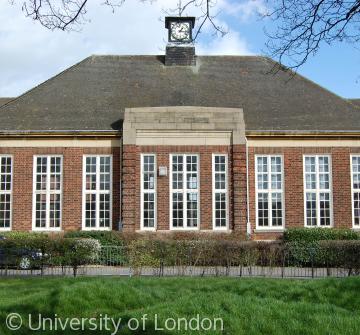Education
 The Samuel Lloyd School for Girls, Rockingham Road, Corby
The Samuel Lloyd School for Girls, Rockingham Road, CorbyUntil the late nineteenth century, education was provided privately. Many grammar schools were founded in towns and villages, attended by pupils whose parents could afford to pay fees, and sometimes residential costs. By the 18th century some poorer children were able to go to Bluecoat schools, so named after the clothing in which the children were dressed. Other children attended dame schools and private academies which were often little more than the front room of a house or a chapel in the church (where they were likely to be taught by the vicar).
As concerns grew during the industrial revolution about the capacity of the country in scientific and industrial skills, increasing concern was expressed about providing adequate education. The National Society, founded in 1811, was set up to promote education for the poor through the Church of England, and led to the building of many schools nationwide. The nonconformists also built day schools, while Ragged Schools were opened to provide industrial training for the urban poor. In addition, both the Church of England and the nonconformists (especially the Methodists) set up both Sunday Schools and 2.5m pupils were attending in 1851 (rising to 6m in 1906). Although this led to many more children receiving some education, it was not clear how much they learnt, and they still had to pay. Rural children were often taken out of school at harvest time, and the timing of the long summer holiday in schools still partly reflects the harvest cycle.
In 1870 the government decided that the position was inadequate and it introduced legislation to set up School Boards where church and chapel were unable to provide sufficient places. From 1875 schooling also became both free and compulsory for children up to age 11. Further legislation followed in 1902 when Local Education Authorities were established, and beyond (including the introduction of school meals in 1906) mainly lengthening the time pupils spent at school. The 1944 Education Act provided full-time schooling for all children to the age of 15 and also formalised further education. Subsequently the expansion of post-16 education, and from the 1960s university education, raised expectations and also meant that most children stayed in full-time education until 18 or 21. For adults who missed out, the opportunity to catch up with their education was provided by Mechanics Institutes in the 19th century, and subsequently by the Workers’ Educational Association and University departments of Adult Education. Private education through the public schools, and in more recent times through a range of fee paying schools, continues to cater for about 7 per cent of pupils.










